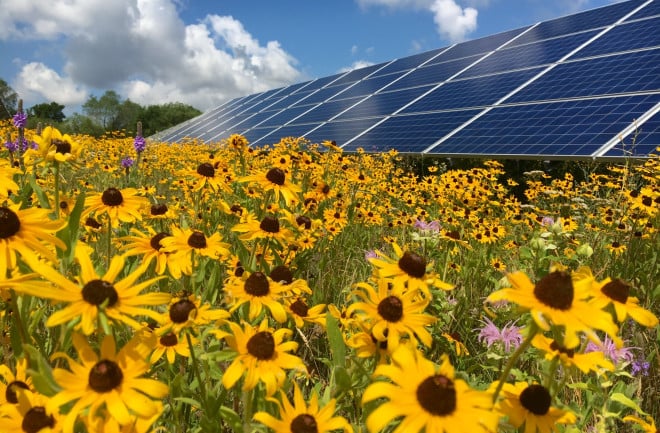
A survey supported by Solar Energy UK has found that solar farms deliver significant biodiversity gains and have the potential to offer even more.
Conducted in collaboration with ecological consultancies Clarkson & Woods and Wychwood Biodiversity, the ‘Solar Habitat 2024: Ecological trends on solar farms in the UK’ study found that solar farms can become “safe havens for biodiversity” and play an “important role” in nature restoration.
The study analysed a total of 87 solar sites in 2023 employing a standardised methodology, which Solar Energy UK helped develop alongside Lancaster University in 2022.
Their findings revealed that vulnerable and red-listed species, such as skylarks, are among the most common wildlife present on UK solar farms.
Yellowhammers, linnets and starlings – all red-listed bird species – were also present at the observed solar sites.
On the ground, brown hares, a species under conservation concern, made up 40% of mammal observations across the 87 observed sites.
The report also included a number of case studies which found that it is possible to grow chamomile for commercial use between solar panel rows – an effective application of the concept of ‘agri-PV’.
Additionally, the report found that planting plugs and pot-grown plants underneath the solar modules have an 80% better survival rate after two years than sowing seeds. The most successful of these were wild garlic and bluebells.
Report analyst Hollie Blaydes, PhD researcher at Lancaster Environment Centre, Lancaster University, said: “Our understanding of biodiversity at solar farms is growing as more ecological monitoring data are collected across an increasing number of UK solar farms. Groups such as birds and invertebrates appear to respond positively to biodiversity-focused management at solar farms and we hope to continue working with the data to further unpick the patterns identified.”
Biodiversity offerings are becoming an increasingly important aspect of a solar farm’s planning application. Recent examples from Downing Renewable Developments and Endurance Energy have cited offerings of 176% and 62% biodiversity net gains, respectively, within the planning applications for their 50MW solar sites.
Nonetheless, despite the significant biodiversity benefits offered by these projects, public prejudice against solar farms can still prevent planning permission from being approved.
Planning permission submitted by Anesco for a 49MW solar farm in Northamptonshire was recently refused despite offering a 195% biodiversity net gain. A “degree of change to the landscape and to peoples’ experience of the area”, was cited as one of the main issues.

